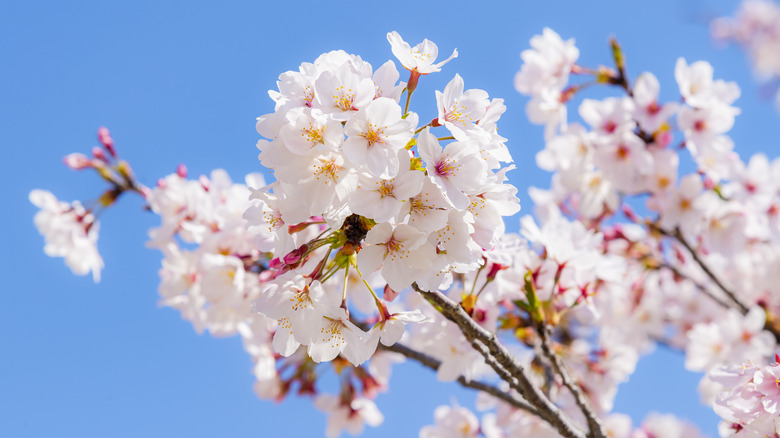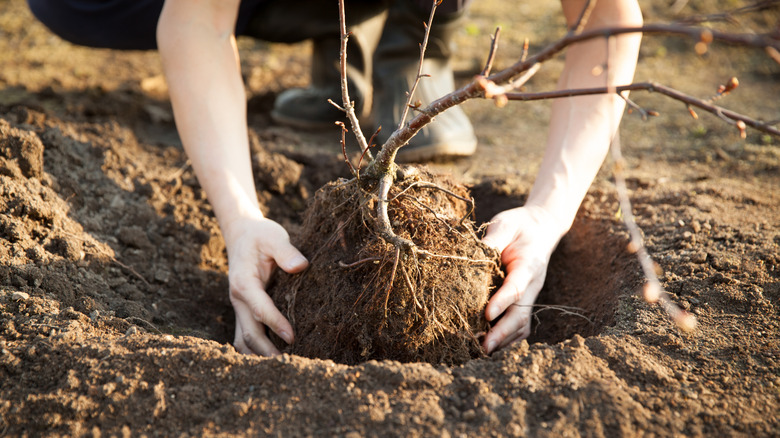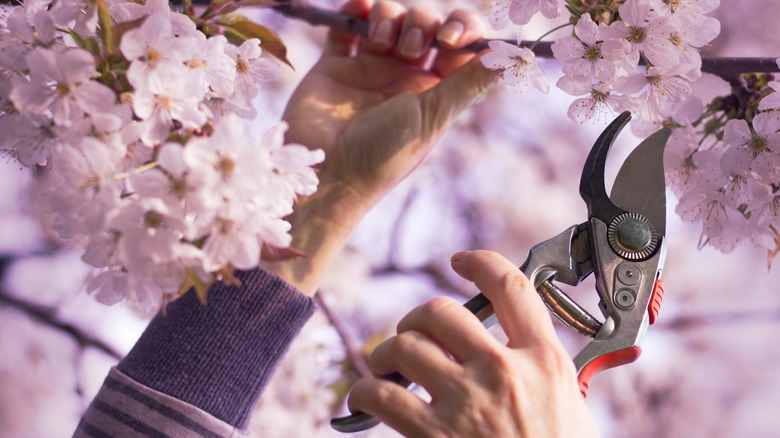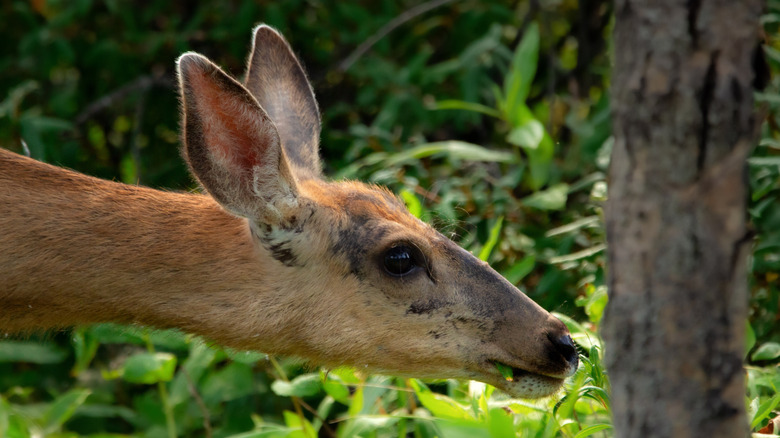Why Your Yoshino Cherry Tree Is Dying & What To Do About It
Beautiful blooms and sweeping canopies make the Yoshino cherry tree, also known as the Prunus × yedoensis, the star of any landscape. That is why people from around the world pack Washington D.C. every April to view these Japanese hybrids. While humans aren't attracted to its small, dark fruits, blue jays and cardinals are among the many birds that love this glorious flowering tree. Bees and wasps are also attracted to the flowers and continue the pollination cycle.
This non-invasive species displays pink blooms that eventually morph into white over a 30- to 40-foot canopy spread. Its distinctive bark is characterized by reddish-brown, horizontal pores. With such standout beauty, it is easy to notice when these trees aren't looking and feeling their best. While your beloved Yoshino cherry tree won't live to the elderly years of a California redwood, you can expand its 40-year life expectancy with proper planting and ongoing maintenance.
You can't control the ever-changing weather patterns that create lingering drought, too much rain, or extreme temperatures that may inhibit your ornamental cherry tree from thriving. What you can do is identify and handle poor pruning techniques, dehydration, six-legged invaders, or fungal diseases such as black knot that can cause your flowering tree to decline long before its 40th birthday. From "peek-a-boo" leaves to spiraling roots to rings of black fungus, there are many potential causes for this species' early death. Between replanting, replacing mulch, and mindful pruning, you can always cherry-pick a few ways to intervene.
Learn from your planting and care mistakes
Be careful when first planting cherry blossoms to ensure a longer tree lifespan. Everything from poor light to root depth can come back to haunt you later. These tree roots need to breathe, so planting them too deep or in compacted soil is a problem — the root ball should be an inch above the surrounding soil. If the soil is too compacted during planting, it can create girdling — a condition in which the root slowly suffocates the trunk by growing around it. If the bark indicates it's still alive, correct your error by replanting this forgiving tree during dormancy — usually in late winter or early spring before blooming starts. Find an area that allows it to spread its canopy and sunbathe for at least six hours daily with partial shade. Water it enough to retain moisture, but allow drainage to avoid waterlogging.
Too much mulch is another leading cause of death for cherry trees and certain other species. When piled against the trunk, mulch cuts off necessary air circulation, causing inner bark (phloem) death — also weakening the roots. Avoid bark suffocation by keeping mulch at no more than two or three inches.
And before pruning, sanitize tools with a wipe, or dip them in ethanol or alcohol. Avoid cross-contamination by cleaning tools when switching to a new tree. Saving pruning for winter allows pruning bud wounds to heal quicker and prevent disease invasion.
Effectively prune out disease early
Correct pruning methods — like cutting several inches above diseased areas — can effectively remove diseased areas on the Yoshino cherry tree. Black knot, a disfiguring tumor-like fungus, can grow up to 6 inches on branches. When the tree is dormant, prune about 3 to 4 inches below the gall formations, burn or bury the discarded galls, and sterilize the tools to avoid spreading the spores to other trees. Chisel out diseased spots on trunks an inch beyond the formation, but be aware that this tissue removal leaves the trunk with an exposed wound.
Other diseases that may need to be pruned out of Yoshino cherry trees include witches' broom, a condition that creates the formation of clustered, small branches. Over time, the condition depletes nutrients from the tree and weakens its defenses from invaders. As it depletes nutrients, you may notice the affected clustered branches bloom faster than other ones. There's also silver leaf disease, which starts with a white fungus containing purplish conks that may form on trunks. The fungus releases a toxin that creates a silvery sheen on leaves.
Instead of pruning, sometimes you simply need a good rake. Cherry shot hole disease creates small purple spots that later drop out and create holes in the leaves. Some leaves yellow before falling off. Quickly clean up these fallen leaves, or you risk healthy ones later being infected. While they may not be fatal to the whole tree, untreated infections can create severe defoliation as seasons progress.
Check for cute and crawling pests
When you notice physical damage to the trunk that hasn't come from a storm, accident, or machinery, some of Bambi's relatives may be the culprit. If fences, rotten eggs, lavender, and garlic haven't stopped deer on your property, consider using tree tubes. Tree tubes are translucent cylinders that allow enough sunlight to penetrate them while protecting the trees from ravenous animals. A cage built from a heavy screen or welded wire can protect a younger cherry tree as it builds stronger bark — use it temporarily, as you don't want the tree to grow into it.
Aphids are more likely to kill a young cherry tree than a mature one as they leave behind sooty mold and honeydew deposits. Their overwhelming presence can create deformity and stop growth. Using a strong flow of soapy water is an effective method of removing them while not hurting the plant. Meanwhile, both young and old trees can die if borer beetles attack already stressed trees. They dig tiny holes to lay eggs in, and the cycle continues as each egg hatches into larvae that eat away at the cambium (growing part of the trunk), leading to the tree's death in a few years. With pyrethrum insecticide, made from chrysanthemum flowers, you can spot treat the tree where you suspect there are bugs, but don't spray it widely.
Don't let invaders bug your tree. With proper planting, pruning, and pest prevention, you can stop Yoshino cherry tree death and have your tree looking juicy again.



